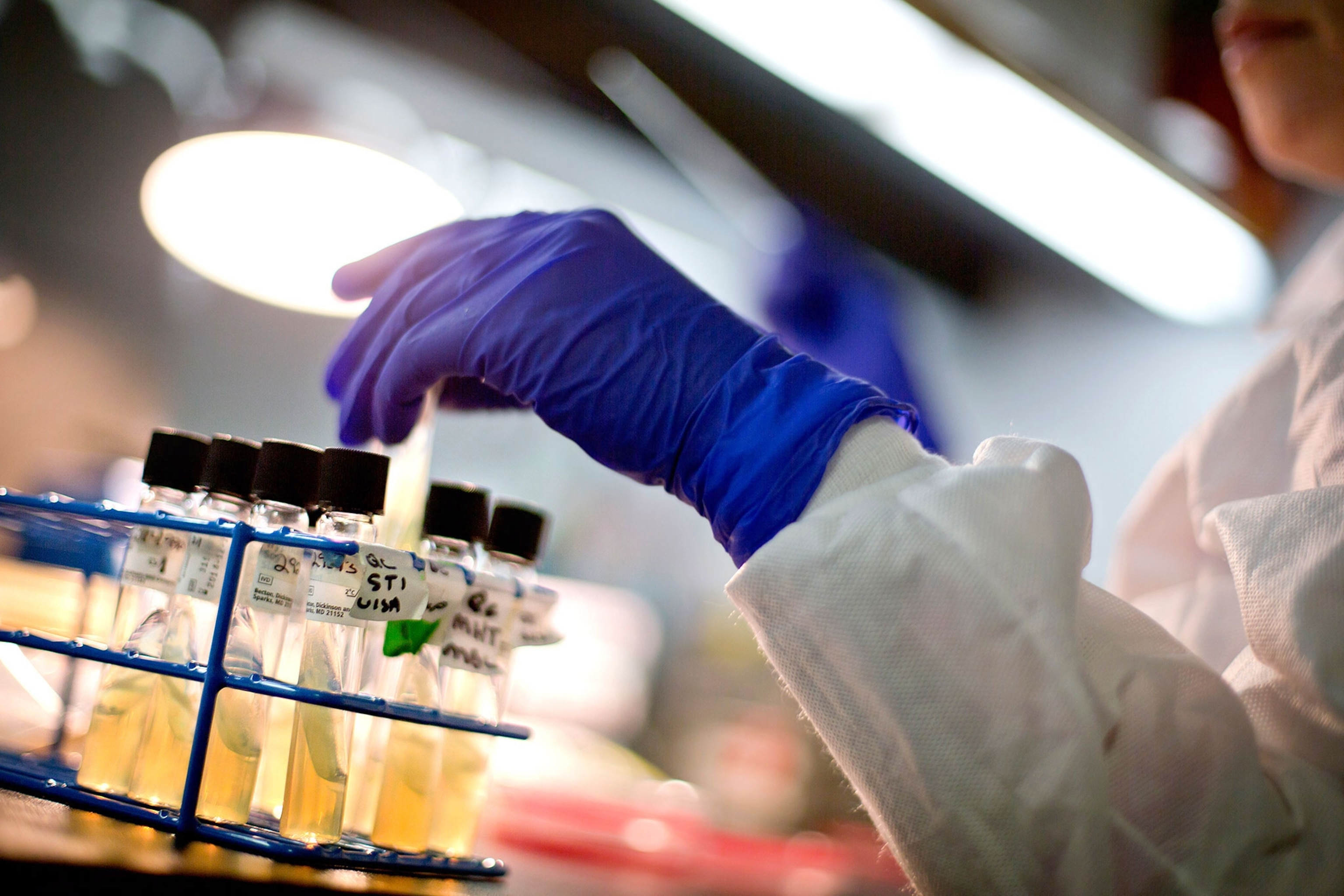
How We'll Tackle Diseases That Are Becoming Untreatable
The United Nations just declared antibiotic resistance “the greatest and most urgent global risk.” Here’s what they’re going to do about it.
An extraordinary gathering at the United Nations on September 21 may have permanently changed how the world deals with antibiotic resistance, which is believed to kill 700,000 people around the world each year.
During the UN meeting, the entire assembly signed on to a political declaration that calls antibiotic resistance “the greatest and most urgent global risk.” But it is what they do next that will determine whether the threat can really be contained.
And alarming news announced while the meeting was happening made clear how urgent it is that antibiotic resistance be reined in.
At a simultaneous meeting in Atlanta, the U.S. Centers for Disease Control and Prevention (CDC) disclosed that the sexually transmitted disease gonorrhea—which has become steadily more drug-resistant over several years—has taken a dramatic turn toward becoming untreatable.
Meanwhile, a multinational research team announced that they have identified a new strain of the drug-resistant staph bacterium MRSA that appears to be traveling on poultry meat.
Shadow Side
The UN meeting, formally the High Level Meeting on Antimicrobial Resistance, marked only the fourth time that the world body has acted on a health issue. (The last time was the Ebola emergency in 2014.) Leaders signaled right from the start that they considered the day important.
“Antimicrobial resistance poses a fundamental long-term threat to human health, sustainable food production, and development,” UN Secretary-General Ban Ki-moon said in a speech opening the meeting. “In all parts of the world, in developing and developed countries, in rural and urban areas, in hospitals, on farms, and in communities, we are losing our ability to protect both people and animals from life-threatening infections.”
His assessment of the dire situation was backed up by the World Health Organization's executive director, Margaret Chan. “Antimicrobial resistance poses a fundamental threat to human health, development, and security,” she said as the meeting opened. “The commitments made today must now be translated into swift, effective, lifesaving actions across the human, animal, and environmental health sectors. We are running out of time.”
The agreement made by the world governments, which will be formally voted in before the General Assembly ends, commits them to creating national plans for combating antibiotic resistance in medicine, agriculture, and the environment, and to reporting back to the General Assembly in 2018 on their progress.
It also commits the UN and its partner agencies—World Health Organization, the Food and Agriculture Organization, and the World Organization for Animal Health, known as the OIE—to creating an “ad hoc interagency coordination group” that will be led by David Nabarro, a physician who works within the Secretary-General’s office and has led UN efforts on Ebola, pandemic flu, and the Haitian cholera epidemic.
But, in a gesture toward respecting the needs of developing countries that might have further to go to tackle the problem, the declaration did not set hard targets for reducing international antibiotic use.
“We got further than I had expected, but not as much as I had hoped for,” Ramanan Laxminarayan, director of the nonprofit Center for Disease Dynamics, Economics and Policy (CDDEP), said in a conversation while the meeting was going on. Over the summer, Laxminarayan and a group of academics and strategists laid out a menu of issues in a series of articles in medical journals for the UN meeting to consider.
“This is day zero, which means we now have to start figuring what happens next: what this coordinating mechanism does, what its mandate is. How does progress get measured?” he said.
“This is a multisector problem, which means the UN has to quickly make friends outside of governments. We’ve got to get doctors, the whole medical practice community, the pharmacists, manufacturing, the whole agricultural sector. It’s not amenable to control-type regulation.”
As the meeting started, CDDEP and eight other organizations in the United States and Europe announced that they are forming an alliance—the Conscience of Antimicrobial Resistance Accountability (CARA)—to help hold governments, manufacturers, food producers, and health-care organizations to the commitments made at the UN.
In its mission statement, the group stressed that the problem of antibiotic resistance has a shadow side, because many low-income societies do not have adequate access to antibiotics. Fighting antibiotic resistance, they said, should not be allowed to deprive people of the drugs they need for treatment of disease.
Consumer Voice
The UN’s decision to take up the cause of antibiotic resistance created an intense few days of gatherings on the east side of Manhattan.
There was the high-level meeting itself, which took place in two immense side-by-side auditoriums at UN headquarters. In one auditorium, experts on the topic gave presentations about challenging issues with controlling antibiotic resistance, such as stimulating development of drugs and devices and finding alternative means of producing lots of animal protein for the expanding economies of the developing world.
In another, representatives of 70 governments gave statements that supported the UN’s move, but also raised their individual concerns about financing change in their health-care systems, protecting exports of their agricultural products, and, for the smaller countries, being allowed to find their own path to the issue instead of having to live up to the standards of the industrialized West.
Those convocations, though, were preceded by another entire day of meetings and speeches on September 20 that included almost every government agency and global nonprofit concerned with the issue, along with flocks of academics, to plead for attention to specific aspects of the problem. The gatherings created an unusually expert chorus of observers scrutinizing the UN actions for subtext.
Thomas Frieden, director of the CDC, spoke at several of the side meetings. He said after one of his speeches, “This is not an easy problem to fix. Preventing drug resistance really requires that you have a functioning health system. It requires that doctors prescribe appropriately, that governments regulate appropriately, that laboratories work. And it requires innovations, better ways to diagnose as well as treat.”
Just before the UN meeting, both the G7 and the G20 groups of governments signed on to supporting action on antibiotic resistance, pointed out Lord Jim O’Neill, a prominent economist who led a two-year independent review that provided much of the agenda for the UN conclave. The G20, led this year by China, used stronger language than anyone anticipated, saying that antibiotic resistance “poses a serious threat to public health, growth, and global economic stability.”
“This is having influence on the private sector now,” said O’Neill, who is also a minister in the U.K. government. “It has got finance ministers behind it, as well as heads of state, and that is having an impact.”
As the meeting opened, there were several significant developments that seemed to be putting momentum behind the UN declaration. DEFRA, the British government’s farming and food agency, announced that it would require farms in the United Kingdom to cut antibiotic use by one-fifth.
At the same time, 13 of the world’s largest antibiotic makers committed to a “road map” for reducing overuse. It not only commits them to reining in their marketing but also accepts responsibility, for the first time, for water pollution from antibiotic manufacturing waste.
And a coalition of five nonprofits that work on food safety announced that, in the United States, fast-food and chain restaurants are rapidly scaling up the amount of meat they buy that is raised without routine antibiotic use. Their report, co-written by the Center for Food Safety, Food Animal Concerns Trust, Friends of the Earth, Natural Resources Defense Council, and Consumers Union (which publishes the magazine Consumer Reports), said that nine of the 25 largest chains in the U.S. have adopted sourcing policies that demand antibiotic-free meat, twice what existed a year earlier.
Consumer pressure led to those developments, and it is likely to push forward much of the change that is needed in farm antibiotic use, David George Velde, a board member of the World Farmers’ Organization, said during the meeting.
“Producers respond to market stimulus,” he said in an on-stage colloquy. “One of the dramatic shifts that has occurred is the awakening of public awareness of health issues, in terms of where does their food come from, how is it produced, how is it processed. The growing interest by consumers in knowing the answers to those questions is having a huge effect in the marketplace.”
Last Defense
At the same time, new challenges are emerging in the fight against antibiotic resistance on a global scale.
On September 21, a multinational research team led by microbiologists Lance Price in Washington, D.C., and Robert Skov in Copenhagen announced a new strain of drug-resistant staph in the journal Clinical Infectious Diseases.
The researchers found the novel strain, a variant of “livestock-associated MRSA,” in city-dwellers who had no contact with farm animals. Denmark has very strict controls on antibiotic use in livestock, and the strain has never been recorded there, raising the possibility that it might have traveled into the country via imported meat.
And at the 2016 STD Prevention Conference held in Atlanta, CDC researchers said that seven men diagnosed in Hawaii were infected with strains of gonorrhea that are showing resistance to both antibiotics in a two-drug combination that is now used to cure the disease—and are the only remaining drugs that work.
“Our last line of defense against gonorrhea is weakening,” Jonathan Mermin, a physician who directs the CDC center focused on sexually transmitted infections, said at the briefing. “If resistance continues to increase and spread, current treatment will ultimately fail and 800,000 Americans a year will be at risk for untreatable gonorrhea.”
In truth, not even the most optimistic representative at the UN meeting expects antibiotic resistance to go away entirely. The goal of the declaration that governments agreed to is to slow down resistance by ceasing the misuse and overuse that force bacteria to evolve.
Still, as the meeting ended, it was clear that they felt the cause had been handed an extraordinary opportunity that could make a real difference in the health of the world—an opportunity that will occur only once.
“We only get one crack at this,” Laxminarayan said. “If we fail to do this, the world will only have checked off a box that says, We have dealt with antimicrobial resistance, it went to the UN, it is done.”







